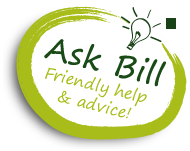Solar panels are the perfect battery chargers for use on board your boat; they are
- Highly reliable, robust and maintenance free
- Easy to install and use
- Totally silent
Solar Panel Benefits
- Up to six times more solar power in mid summer than mid winter - a perfect match for winter battery maintenance and summer use
- No running costs
- Reduce / eliminate need to run generator or engine
- Extend battery life by keeping charge maintained
- Environmentally friendly source of power
What size solar panel do I need?
For winter battery maintenance (protection against natural battery drain) we recommend approximately 10W of solar for every 100Ah of battery capacity. This assumes the solar panel can be mounted in an optimal position (outdoors, South facing, unshaded and angled towards the midday sun).
10W Solar : 100Ah Battery
So, for example if you have 3 x 110Ah 12V leisure batteries wired in parallel for 12V , your total battery capacity is 330Ah therefore you require a solar panel of ideally 33W. In this case a 30W or 40W solar panel would be suitable to protect against natural battery drain all year round.
A bigger solar panel will provide more charge to the battery and although this may exceed winter maintenance requirements it will provide extra charge at sunnier times of the year when you are using 12V loads such as 12V lights and 12V appliances. A larger solar panel is also a good idea if solar panel position is not always optimal or if there are loads drawing power from the battery all of the time.
A solar panel of whatever size will help with all of the above and will reduce your reliance on other charging sources (whether it be mains, engine or generator) to some extent. In most cases when asking what size panel is required, bigger is usually better! Often physical space for mounting the solar panel or panels is the limiting factor.
It is possible to start with a single solar panel and add extra panels at a later date.
What type of solar panel should I use?
For a details on the benefits of each, and how to use them and install them please get in touch.
Do I need a solar charge controller?
A
solar charge controller (also called a
solar regulator ) is usually required to help manage battery charging from the solar panel and most importantly to prevent battery overcharging. Uncontrolled overcharging of a battery will damage it, reducing performance and lifespan and ultimately costing you money.
If the solar panel size is smaller than ratio of 10W to 100Ah in some cases a
solar charge controller (
solar regulator ) is not required. That said, if you are close to the above ratio and will be leaving the solar panel and batteries unattended for long periods in the summer months, fit a solar charge controller.
Simple
solar charge controllers are not expensive and for peace of mind are a worthwhile addition to the vast majority of solar panel installations on boats, yachts and leisure vehicles.
What size solar charge controller ?
Solar charge controllers (solar regulators) are sized according to the current that they can manage flowing from the solar panel(s) to the battery. For example the popular
Morningstar SHS6 is rated at 6Amps. As a rough guide multiply charge controller Amps by 12 (12V) to give maximum solar panel size (or divide the solar panel watts by 12V to give the maximum Amps). So for a
6A charge controller , maximum solar panel size of 72Watts (6A x 12V).
Charge Controller Amps x 12V = Maximum Solar Panel Watts
or
Solar Panel Watts / 12V = Minimum Charge Controller Amps
This is not completely accurate but is a good safe rule of thumb for those new to solar power.
Do I need a blocking diode?
If you are connecting two or more solar panels in parallel (+ to +, - to - to increase watts for the same voltage) a blocking diode should be fitted in the +ve line between each panel. By only allowing power to flow in one direction the blocking diode prevents power flowing from one solar panel to the other if one falls into shade when the other doesn't. This ensures that solar power created always flows to your battery where you need it.
A blocking diode may also be required if you are fitting a single solar panel to a battery bank with no solar charge controller. In this scenario the blocking diode is required to prevent power flowing from the battery to the solar panel at night.
A blocking diode is not required if you are fitting a single solar panel and a solar charge controller as the solar charge controller will prevent power flowing from the battery back to the solar panel.
What's a bypass diode?
Bypass diodes are fitted within
solar panels (usually at the factory) to prevent power loss between strings of solar cells in the event that the
solar panel is partially shaded. This is more inportant on large solar panels .
In Conclusion
Solar panels are an ideal hassle free battery charging solution for boats and yachts of all types. They are easy to fit and use, have a long life and extend battery life as well.
If you require any help or advice with your solar panel project please get in touch we will be happy to offer help and advice and would be delighted to supply the components your require.


